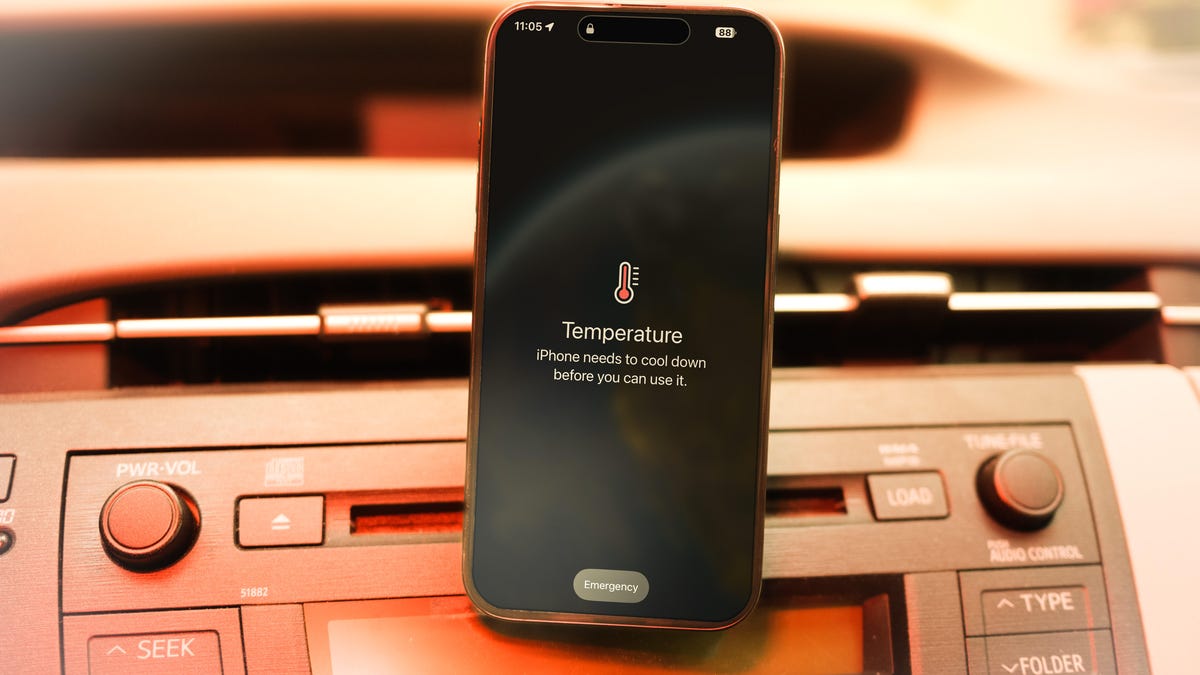
Do you have a habit of leaving your phone out in the sun? If so, it could be at risk of overheating. This isn’t just a problem for older devices. Even the newest flagship phones like the Samsung S24 or iPhone 15 can get too warm if left in the direct sun for too long.
You don’t want your phone to overheat, because it can slow down or stop working altogether. Too much heat can result in permanent damage, which could force you to replace your battery or even get a brand-new phone. And that requires spending money, even if you have insurance.
Watch this: iPhone 15’s First Week Is Not So FineWoven
That’s why you want to take all the measures you can to prevent your iPhone, Android device or other phone from overheating. You can’t stop all instances of overheating, but there are many things you can do. Here’s what you need to know.
For more, check out the best iPhone you can get in 2024, as well as our top picks if you’re considering an Android phone.
Why is your phone getting hot in the first place?
Your phone might overheat for many reasons, but these are some of the most common culprits:
- Leaving your phone in direct sunlight
- Keeping your phone in a hot environment
- Overusing your phone when it’s charging
- A faulty battery or charger
- Bugs in the software
- Rogue apps or malware
Your phone might overheat from other causes, like a malfunctioning application or even a suffocating phone case, but the reasons above are the most likely causes of your phone getting too hot.
You don’t want to overuse your phone while it’s charging.
What does overheating do to your phone?
If the interior temperature of your phone exceeds what’s normal and the device overheats, you can expect a few issues:
- You can’t use your phone
- Your phone slows down
- Charging slows down or completely stops
- Your signal is weakened
- Your camera’s flash is temporarily disabled
There are also possible permanent harmful effects — overheating can cause lasting damage to the battery, SIM card and other crucial parts inside your phone.
If your phone overheats, it may not be able to charge until it returns to a normal temperature.
So how can you prevent your phone from overheating?
The most important thing is to keep your phone away from direct sunlight when possible, especially when it’s warm. Your phone might be fine in the grass on an overcast day, but the warmer the temperature, the less your phone can withstand the sun. At the beach, your phone can overheat in just a few minutes in the sun. Same if you put it in a sunny spot in your car.
Instead, get your phone out of the direct light, whether it’s in your pocket, inside a backpack or under a towel/blanket or dashboard. Anyplace that will keep it away from sunlight will work.
It’s fairly easy to protect your phone from the sun, but high temperatures alone can also cause your phone to overheat. After only an hour, the inside of a car can reach 143 degrees when it’s 100 degrees outside, for example, so a phone left in your cup holder could quickly overheat and get damaged. The short answer: Don’t keep your phone in a hot environment for an extended period of time, even if it’s not in direct sunlight. That includes your car, a sauna, the kitchen, the middle of the desert or anywhere near a fire.
Your phone’s optimal internal temperature should be somewhere between 32º and 95º F (0º and 35º C). To prevent overheating, Apple recommends keeping the device in a place where the temperature is between -4º and 113º F (-20º and 45º C).
You should also follow these tips to prevent your phone from overheating
- Don’t use graphics- or processor-intensive apps when your phone is charging. That includes massive mobile video games like PUBG Mobile or streaming apps like Netflix and Hulu.
- Update your phone system software and apps to the latest software available. A bug in the software can cause overheating issues, so always stay up-to-date with your software.
- Steer clear of third-party chargers. Most times you’ll be fine, but a cheaply designed charger could cause your phone to overheat.
While you’re here, check out how to make your Android feel new again with these five tips.